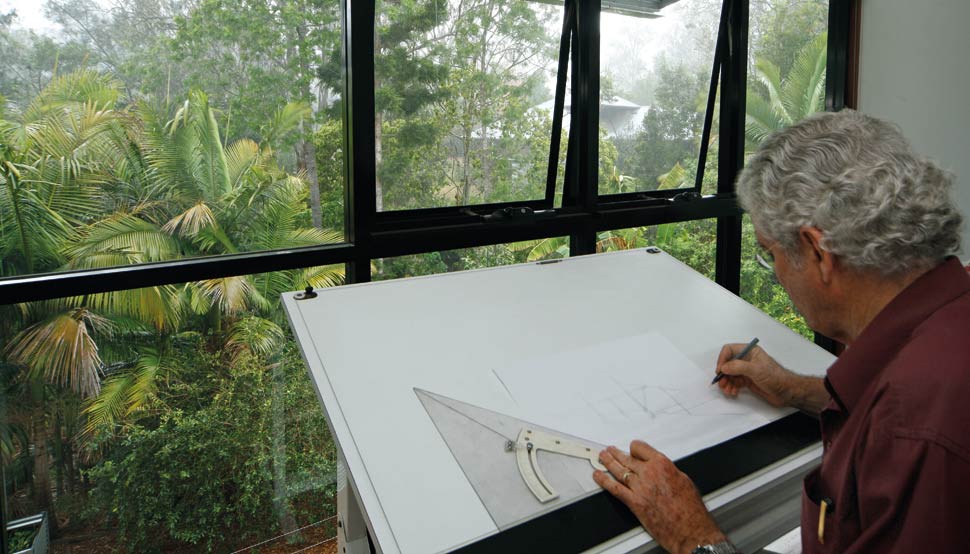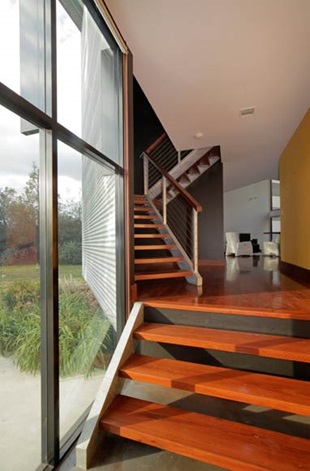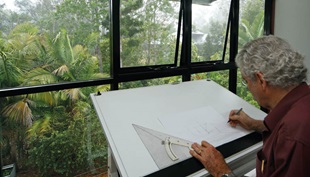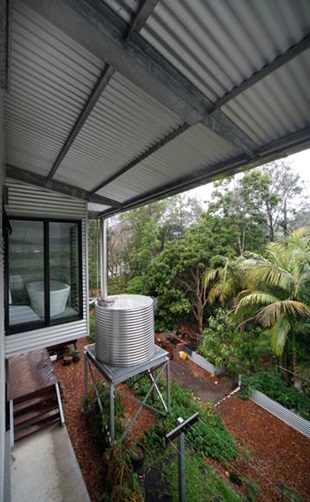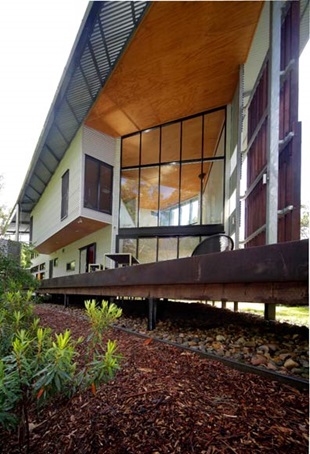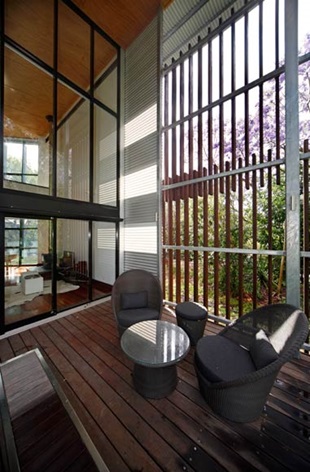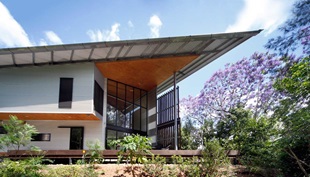The GAP Residence
Architect Ralph Bailey’s design for his own residence ripples with ideas absorbed from its rainforest surrounds, the traditional corrugated steel Queenslander and ancient thermal chimneys.
Credentials:
Client: Ralph and Jennifer BaileyLocation: The Gap, Brisbane, Queensland
Architect: Guymer Bailey Architects
Project Team: Ralph Bailey and Stan Chrenkoff
Steel Fabricator and Shop Drawing Contractor: Watkins Steel
Builder and Cladding Contractor: Matt Gaffney
Structural & Civil Engineer: Brett Mills Engineers
Landscape Architect: Ralph Bailey
Building Size: Ground floor: 205m2; First floor: 117m2; External: 47m2
Credits: Words: Peter Hyatt Photography:Scott Burrows
The gleam in architect Ralph Bailey’s eye is partly the reflection of his latest creation, a house for himself and wife Jenny at The Gap, in a leafy pocket 12 kilometres west of Brisbane’s CBD.
An architect as experienced as Ralph Bailey doesn’t take the challenge of designing his own residence lightly. “It’s a tough ask: it’s a showcase in many ways for what you have, or haven’t, learnt,” he observes. “You create for yourself, but you will be judged differently because there is no-one else to blame. There’s no client, no excuse of who got in the way of some grander, better idea.”
Many architects refuse to self-diagnose and design, preferring a designer friend or colleague to handle the delicate task of fashioning their shrine to domestic bliss. Bailey, however, has plunged into the whirlpool with his house at The Gap. Is there a secret to resolving such designs? “How do you begin to design well?” he asks rhetorically. “Take a simply resolved plan, a simple palette of material and learn about details. But,” he adds with a caveat, “it only comes about through failure and discovering what doesn’t work. Then you know what to avoid and don’t recycle mistakes.”
His designs produce a fusion between the natural and imposed. The Gap House wefts with the landscape to create a series of silvery foils that fan and feather into space. Its tree-house qualities provide various perches from which to work and play. This light build quality doesn’t mean the project isn’t fully grounded in substance or performance.
Meticulously sited on its 2750 square-metre allotment – previously a tennis court – the house aligns its slender length to a rainforest creek and noses towards the main road. Bailey has opened the house with expansive decks to the creek while substantially blunting traffic noise with a subtly striped, sound and heat-insulated wall made from COLORBOND® steel in gentle defiance to passing traffic.
Essentially a series of articulated steel skins, the house’s permeable bond with the elements creates a sublime environmental relationship. A sound-insulated wall features three bands of cladding comprised of LYSAGHT CUSTOM ORB® profile made from ZINCALUME® steel, LYSAGHT CUSTOM ORB® profile made from COLORBOND® steel in the colour Surfmist® and an opal-coloured polycarbonate CUSTOM ORB®-matching profile.
Other exterior roofing and cladding is LYSAGHT CUSTOM ORB® profile made from ZINCALUME® steel.
“I love the possibilities that CUSTOM ORB® provides,” he says. “The steel cladding went on here in big sheets and so it’s less of a patchwork and has greater continuity and ease-of-application.
“I love steel’s texture and scale, and I don’t want maintenance. Brick and weatherboard are so much more patchwork and labour-intensive. Steel spares me that, it’s incredibly durable and blends with the environment,” Bailey continues.
“You might say that’s not possible to do so when using unpainted steel, but I recently designed a hayshed using ZINCALUME® steel that melded delightfully into its grassy landscape. Its shine settles down to a gentle, soft grey and resembles the mists that fill the valley in the morning.”
The Gap Residence recognises the traditional corrugated steel Queenslander, yet reaches to Hyderabad, India, with a modern take on an ancient understanding of thermal chimneys.
The skillion roof’s role is also to support three roof-mounted rotary ventilators that assist thermal control. A thermal chimney with operable glass louvres rises along the corner of the internal staircase. The ‘chimney’ cools in summer by the extraction of hot air through the ventilators and internally adjustable louvred vents in the staircase wall. In winter the process is reversed. With vents closed, the chimney acts as a heat sink. Internally, a glass-fronted standalone fireplace with extended stainless steel flue heats both the upper and lower living spaces.
Bailey recounts his graduation, when invited to remain at university and pursue a masters or doctorate after achieving first-class honours. “I didn’t hesitate. I told them: ‘No way. I’m dying to get out there and do it.’” And he has. Plenty of clients have and continue to be grateful Ralph Bailey has put theory into such convincing practise.


